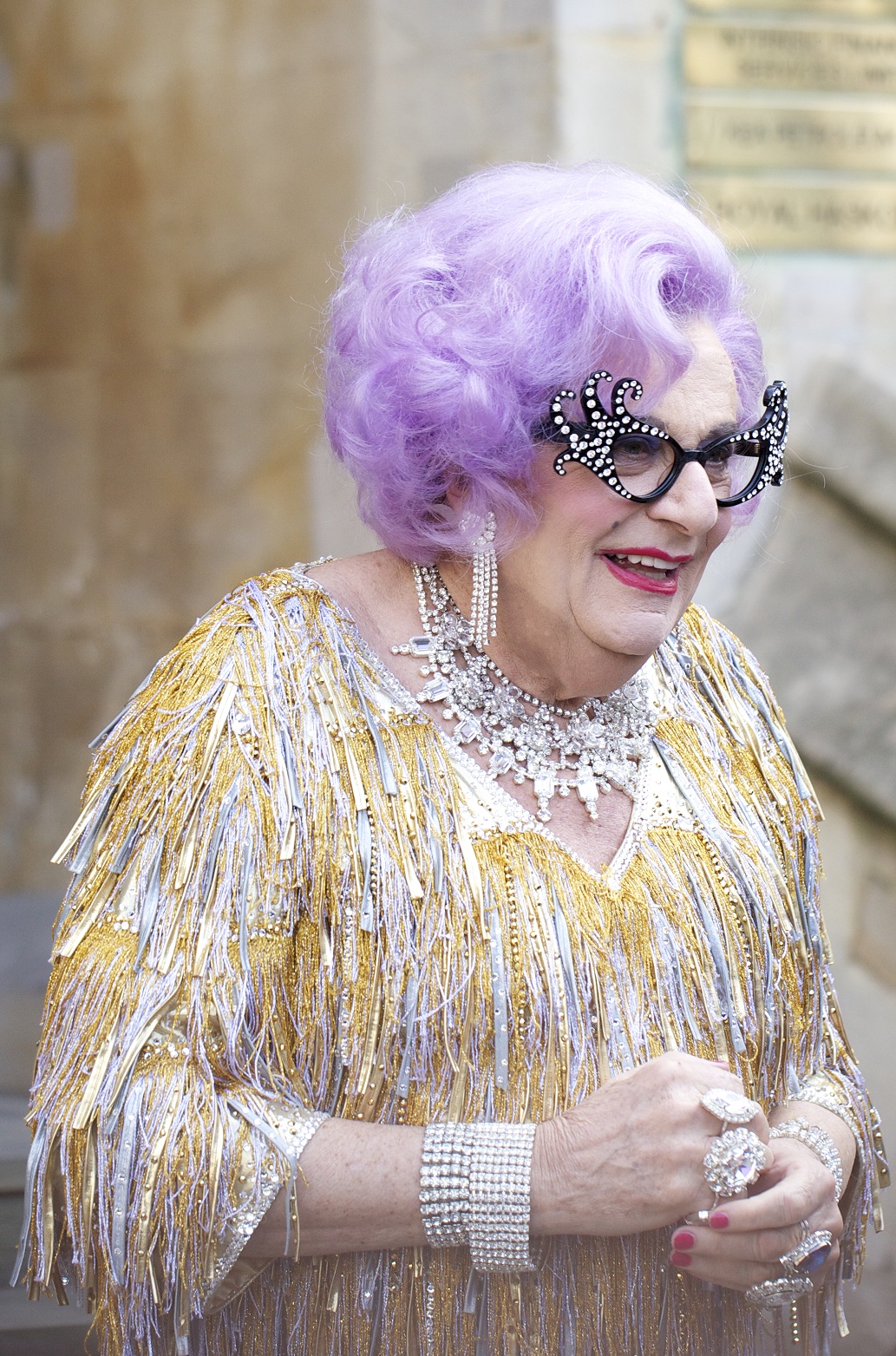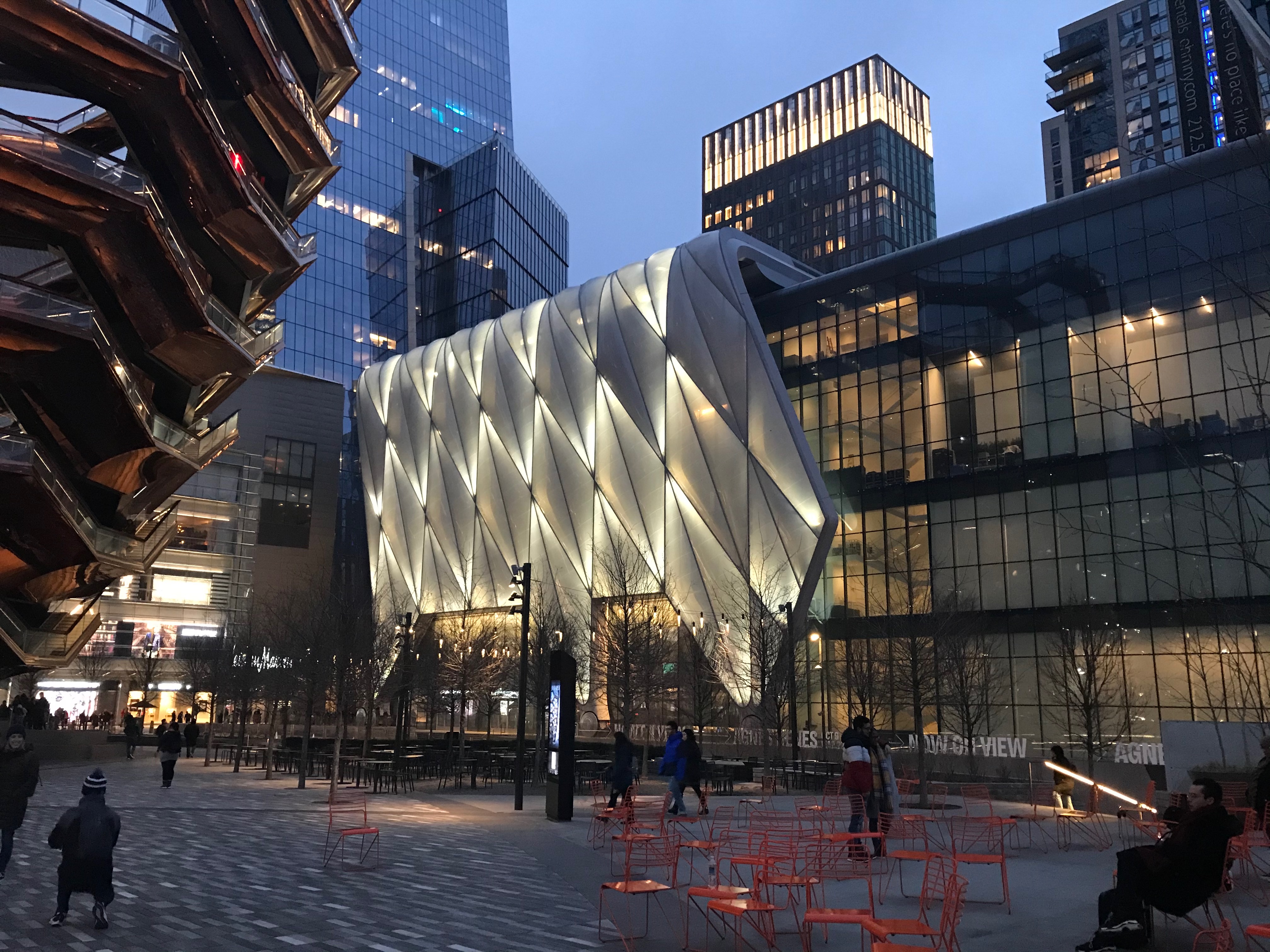|
Tivoli Theatre, Adelaide
Her Majesty's Theatre is a theatre in Adelaide, South Australia, located on Grote Street, originally built in 1913 as the New Tivoli Theatre. Other names through its history have been the Princess Theatre (before it was first opened), the Prince of Wales Theatre, Tivoli Theatre and the Opera Theatre. It re-opened in June 2020 after a major refurbishment. History 20th century Designed by Adelaide-born architects David Williams and Charles Thomas Good, the foundation stone for the Princess Theatre was laid on 14 October 1912. However, after it was built in 1913, it opened as the New Tivoli Theatre, part of national Tivoli vaudeville circuit, and is the only original Tivoli still standing. The opening ceremony was presided over by Mayor John Lavington Bonython on 5 September 1913. It was renamed the Prince of Wales Theatre in 1920, and back to the Tivoli Theatre in 1930. In 1954 it was acquired by J. C. Williamson's, but it was very dilapidated by the end of the Adelaide Festival ... [...More Info...] [...Related Items...] OR: [Wikipedia] [Google] [Baidu] |
Grote Street, Adelaide
Grote Street is a major street running east to west in the western half of Adelaide city centre, in Adelaide, South Australia. It is on the northern border of Chinatown and the Adelaide Central Market, and is a lively centre for shopping and restaurants. The historic Her Majesty's Theatre is located here. History The street, laid out as part of Colonel Light's city plan in 1837, was named after George Grote, an English classical historian and supporter of Robert Gouger. Churches The original St Patrick's Church, Adelaide's first Catholic church, was built from around 1845 on what is now Gray Street, and was the principal place of worship for Catholics until St Francis Xavier's Cathedral opened on Wakefield Street in 1858. A much larger building, designed by Woods and Bagot, was built between 1912 and 1914, and still stands today, on the corner of Gary Street. The original church building was demolished in 1959. A chapel was built on the northern side of Grote Street at ... [...More Info...] [...Related Items...] OR: [Wikipedia] [Google] [Baidu] |
Television In Australia
Television in Australia began experimentally as early as 1929 in Melbourne with radio stations 3DB and 3UZ, and 2UE in Sydney, using the ''Radiovision'' system by Gilbert Miles and Donald McDonald, and later from other locations, such as Brisbane in 1934.Carty, Bruce, ''On the Air: Australian Radio History'', privately published, 2011, Gosford, NSW Mainstream television was launched on 16 September 1956 in Willoughby, New South Wales, with Nine Network station TCN-9 Sydney. The new medium was introduced by advertising executive Bruce Gyngell with the words "Good evening, and welcome to television", and has since seen the transition to colour and digital television. Local programs, over the years, have included a broad range of comedy, sport, and in particular drama series, in addition to news and current affairs. The industry is regulated by the Australian Communications and Media Authority, through various legislation, regulations, standards and codes of practice, which ... [...More Info...] [...Related Items...] OR: [Wikipedia] [Google] [Baidu] |
Smoking Ceremony
Smoking ceremony is an ancient and contemporary custom among some Aboriginal Australians that involves smouldering native plants to produce smoke. This herbal smoke is believed to have both spiritual and physical cleansing properties, as well as the ability to ward off bad spirits. In traditional, spiritual culture, smoking ceremonies have been performed following either childbirth or initiation rites involving circumcision. In contemporary culture, elements of smoking ceremonies have been incorporated into Welcome to Country performances and other spiritual events held for the general public. Research has shown that heating the leaves of ''Eremophila longifolia'' (commonly known as the Berrigan emu bush), one of the plants used in smoking ceremony, produces a smoke with significant antimicrobial effects. These effects are not observed in the leaves prior to heating. Fumigating a newborn infant, a mother who has just given birth, or a boy who has just been circumcised, is consider ... [...More Info...] [...Related Items...] OR: [Wikipedia] [Google] [Baidu] |
Welcome To Country
A Welcome to Country is a ritual or formal ceremony performed as a land acknowledgement at many events held in Australia. It is intended to highlight the cultural significance of the surrounding area to the descendants of a particular Aboriginal clan or language group who were recognised as the original human inhabitants of the area. For the Welcome to be recognised as official, it must be performed by a recognised elder of the group. Welcomes to Country are sometimes accompanied by traditional smoking ceremonies, music or dance. Where an elder is not available to perform the Welcome, or there is not a recognised traditional owner, an Acknowledgement of Country may be offered instead. The term "Country" has a particular meaning and significance to many Aboriginal peoples, encompassing an inter-dependent relationship between an individual or a people and their ancestral or traditional lands and seas. The connection to land involves culture, spirituality, language, law/lore, k ... [...More Info...] [...Related Items...] OR: [Wikipedia] [Google] [Baidu] |
Narungga
The Narungga people, also spelt Narangga, are a group of Aboriginal Australians whose traditional lands are located throughout Yorke Peninsula, South Australia. Their traditional language, one of the Yura-Thura grouping, is Narungga. Country In Norman Tindale's estimation the Narungga held some of tribal land on the Yorke Peninsula, running north as far as Port Broughton. Their eastern limits were around the Hummock Range. The following places all lay within Narungga tribal territory - Bute, Wallaroo, Ardrossan, Marion Bay, and Cape Spencer. Their borders with the Kaurna lay at the head of Gulf St Vincent. Language The Narungga people's language is Narungga, which in the 21st century is being revived under various language revival projects. Social organisation The Narungga are known to have been composed of at least four groups, according to Norman Tindale, one being Wallaroo. Later sources say that the Narungga comprised four clans who shared the Yorke Peninsula (w ... [...More Info...] [...Related Items...] OR: [Wikipedia] [Google] [Baidu] |
Kaurna
The Kaurna people (, ; also Coorna, Kaura, Gaurna and other variations) are a group of Aboriginal people whose traditional lands include the Adelaide Plains of South Australia. They were known as the Adelaide tribe by the early settlers. Kaurna culture and language were almost completely destroyed within a few decades of the British colonisation of South Australia in 1836. However, extensive documentation by early missionaries and other researchers has enabled a modern revival of both language and culture. The phrase ''Kaurna meyunna'' means "Kaurna people". Etymology The early settlers of South Australia referred to the various indigenous tribes of the Adelaide Plains and Fleurieu Peninsula as "Rapid Bay tribe", "the Encounter Bay tribe", "the Adelaide tribe", the Kouwandilla tribe, "the Wirra tribe", "the Noarlunga tribe" (the Ngurlonnga band) and the Willunga tribe (the Willangga band). The extended family groups of the Adelaide Plains, who spoke dialects of a common lang ... [...More Info...] [...Related Items...] OR: [Wikipedia] [Google] [Baidu] |
Adelaide Festival Centre
Adelaide Festival Centre, Australia's first multi-purpose arts centre and the home of South Australia's performing arts, was built in the 1970s, designed by Hassell Architects. The Festival Theatre opened in June 1973 with the rest of the centre following soon afterwards. The complex includes Festival Theatre, Dunstan Playhouse (formerly The Playhouse and Optima Playhouse), Space Theatre (formerly The Space) and several gallery and function spaces. Located approximately north of the corner of North Terrace and King William Road, lying near the banks of the River Torrens and adjacent to Elder Park, it is distinguished by its two white geometric dome roofs, and lies on a 45-degree angle to the city's grid. Adelaide Festival Centre hosts Adelaide Festival and presents major festivals across the year including Adelaide Cabaret Festival, OzAsia Festival, DreamBIG Children's Festival, Adelaide Guitar Festival and OUR MOB. It is also home to Adelaide Symphony Orchestra, State Opera ... [...More Info...] [...Related Items...] OR: [Wikipedia] [Google] [Baidu] |
Department Of Planning, Transport And Infrastructure
The Department for Infrastructure and Transport (DIT), formerly the Department of Planning, Transport and Infrastructure (DPTI), is a large department of the government of South Australia. The website was renamed , but without a formal announcement of change of name or change in documentation about its governance or functionality. Ministerial responsibility The minister responsible for all aspects of the department's operations in the Marshall government was Stephan Knoll, Minister for Transport, Infrastructure and Local Government, and Minister for Planning. He served from March 2018, until his resignation in the wake of an expenses scandal on 26 July 2020. The Urban Renewal Authority, trading as Renewal SA, was within the minister's portfolio responsibilities until 28 July 2020, when it was moved to that of the treasurer, Rob Lucas. Corey Wingard Corey Luke Wingard is a former Australian politician. He was a Liberal member of the South Australian House of Assembly fr ... [...More Info...] [...Related Items...] OR: [Wikipedia] [Google] [Baidu] |
Hansen Yuncken
Hansen Yuncken is an Australian construction company, founded in 1918. Company profile Since 2006, the company has specialised in sustainable architecture, completing Council House 2 in Melbourne, the world's first 6 star green building, K2 apartments, public housing in Windsor, Victoria and SA Water's headquarters in Adelaide. The company is engaged in the delivery of Public–private partnership, PPP projects across Australia, including NSW Schools I PPP, SA Police and Courts, Orange Hospital, Monash University School of Pharmacy PPP and NSW Schools II PPP and SA Super Schools. In August 2010, Hansen Yuncken was named Australia's Private Business of the Year in BRW (magazine), BRW Magazine, for companies with more than $100 million turnover. The company also ranked 27 on BRW's 2010 list of Top 500 private companies in Australia. In 2010 Hansen Yuncken were working on $2.1 billion worth of projects. [...More Info...] [...Related Items...] OR: [Wikipedia] [Google] [Baidu] |
Theater (structure)
A theater, theatre or playhouse, is a structure where theatre, theatrical works, performing arts and musical Concert, concerts are presented. The theater building serves to define the performance and audience spaces. The facility usually is organized to provide support areas for performers, the technical crew and the audience members, as well as the stage where the performance takes place. There are as many types of theaters as there are types of performance. Theaters may be built specifically for a certain types of productions, they may serve for more general performance needs or they may be adapted or converted for use as a theater. They may range from open-air amphitheaters to ornate, cathedral-like structures to simple, undecorated rooms or black box theaters. A theatre used for opera performances is called an opera house. A theater is not required for performance (as in site-specific theatre, environmental theater or street theatre, street theater), this article is about s ... [...More Info...] [...Related Items...] OR: [Wikipedia] [Google] [Baidu] |
Die Fledermaus
' (, ''The Flittermouse'' or ''The Bat'', sometimes called ''The Revenge of the Bat'') is an operetta composed by Johann Strauss II to a German libretto by Karl Haffner and Richard Genée, which premiered in 1874. Background The original literary source for ' was ' (''The Prison''), a farce by German playwright Julius Roderich Benedix that premiered in Berlin in 1851. On 10 September 1872, a three-act French vaudeville play by Henri Meilhac and Ludovic Halévy, ', loosely based on the Benedix farce, opened at the Théâtre du Palais-Royal. Meilhac and Halévy had provided several successful libretti for Offenbach and ''Le Réveillon'' later formed the basis for the 1926 silent film '' So This Is Paris'', directed by Ernst Lubitsch. Meilhac and Halévy's play was soon translated into German by Karl Haffner (1804–1876), at the instigation of Max Steiner, as a non-musical play for production in Vienna. The French custom of a New Year's Eve ''réveillon'', or supper party ... [...More Info...] [...Related Items...] OR: [Wikipedia] [Google] [Baidu] |







